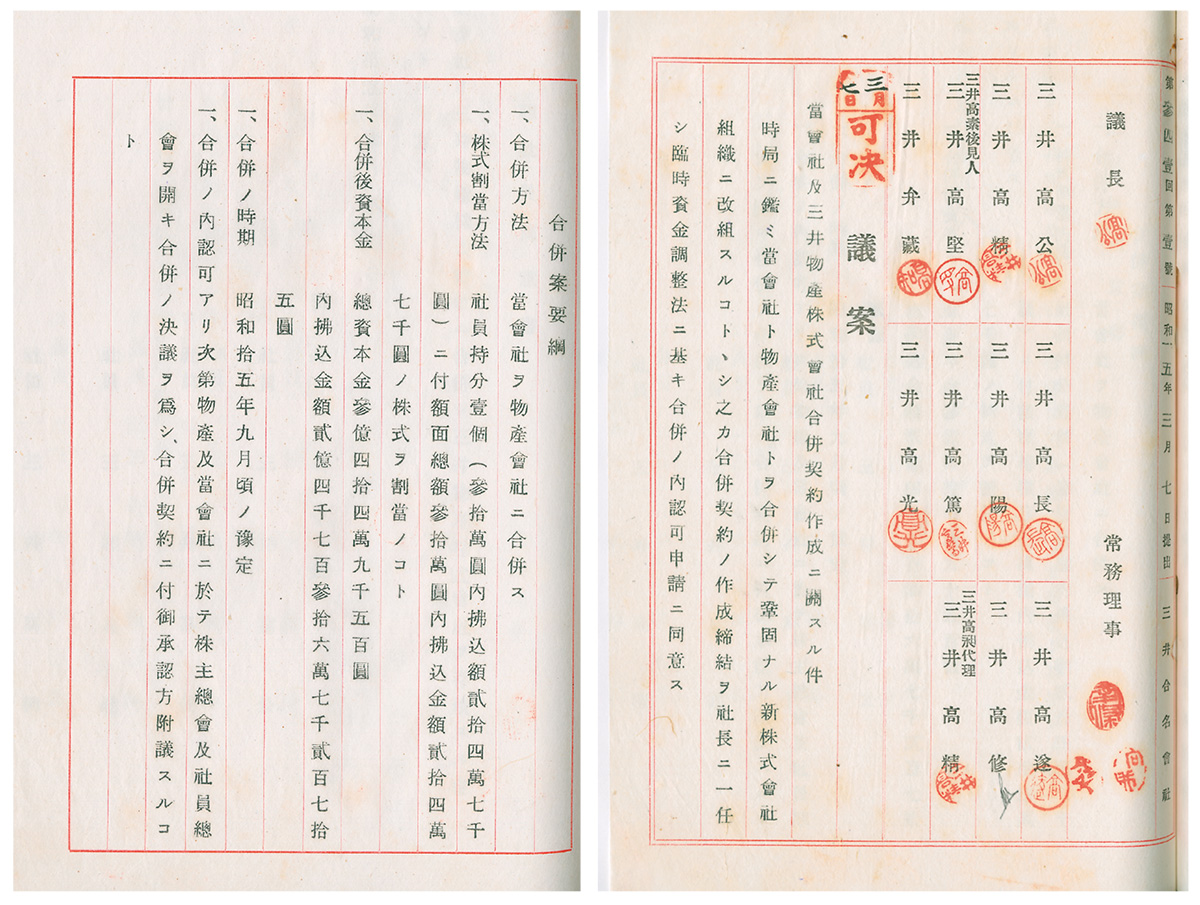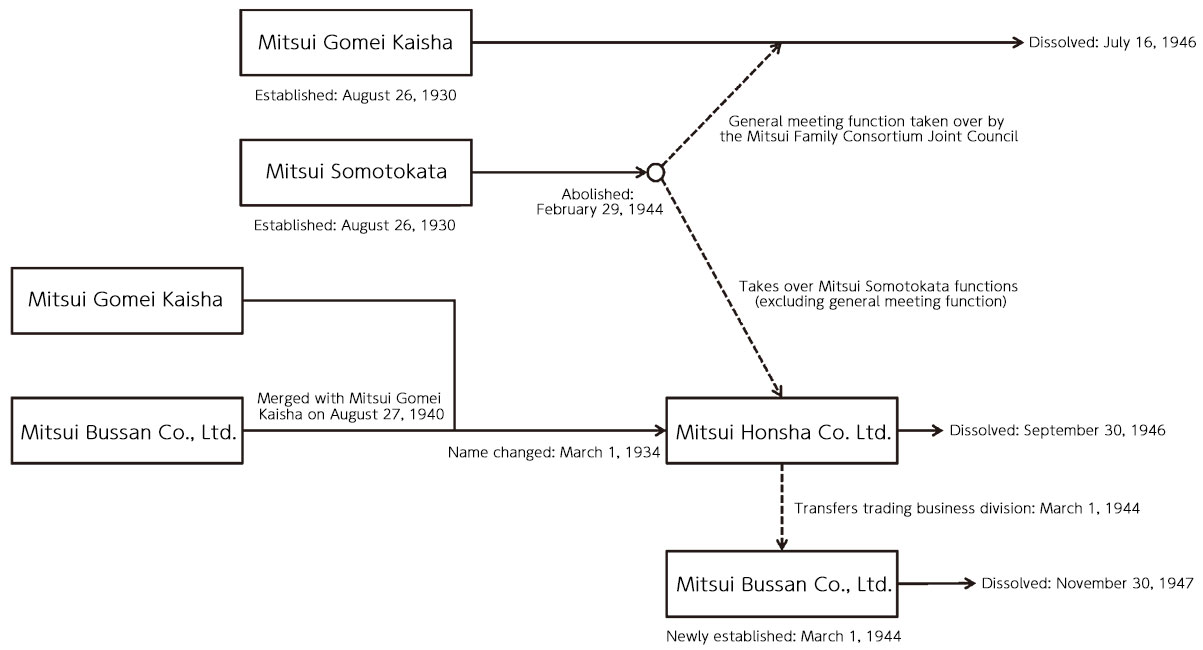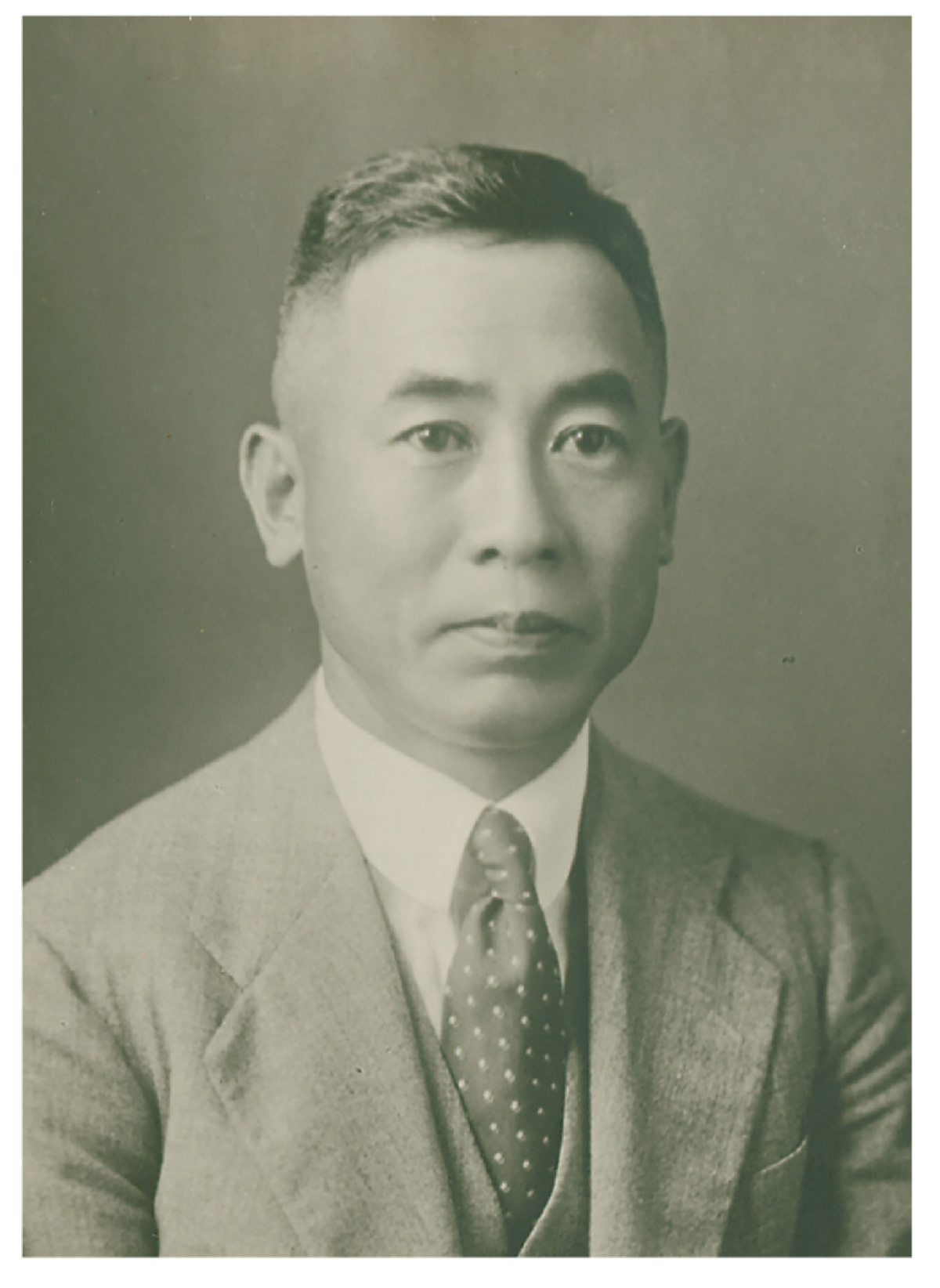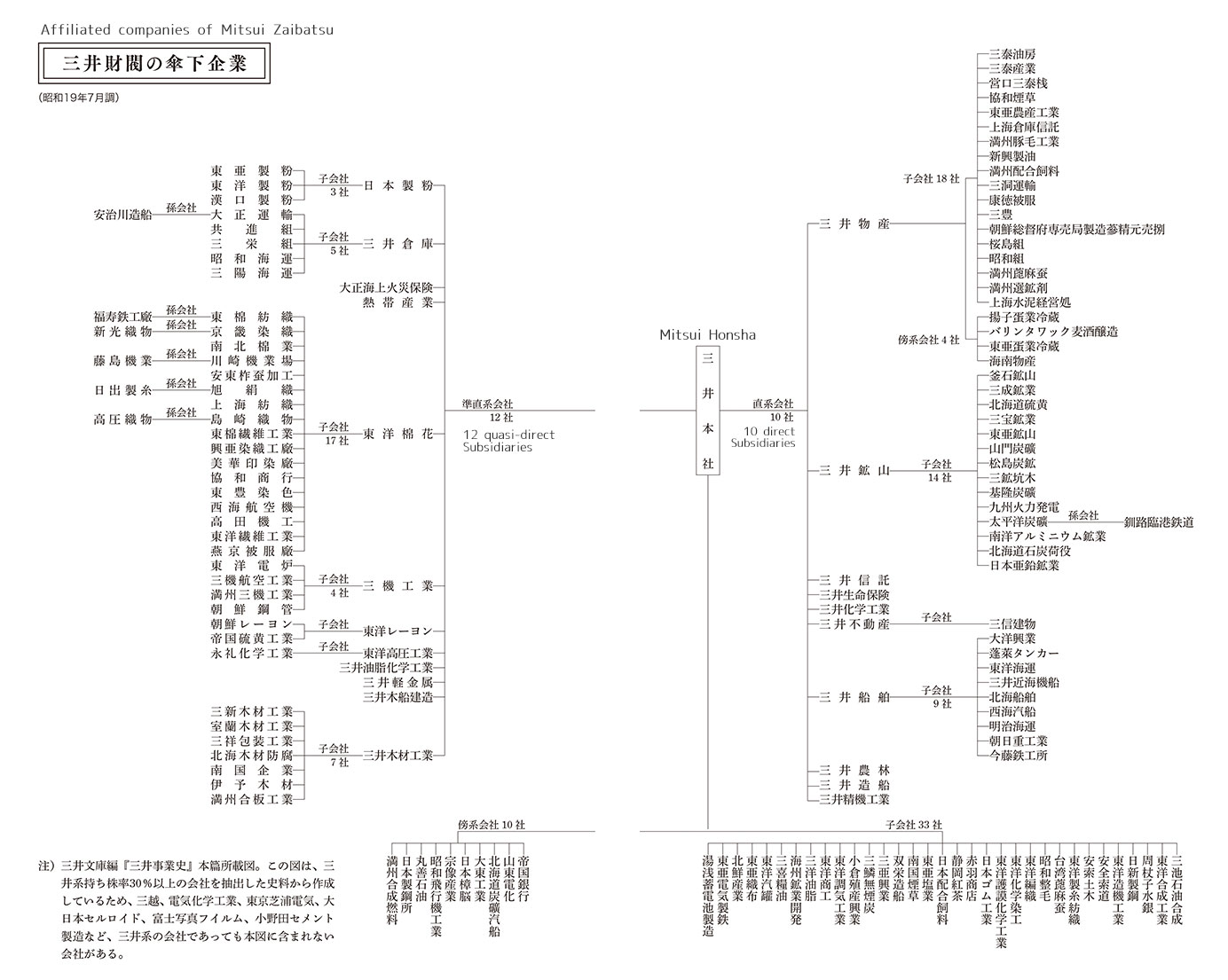48 Wartime Business Restructuring

Public Offering of Shares
As the process of recovering from the Showa Depression began, new investments rapidly increased in companies such as Mitsui Mining, Shibaura Seisakusho, Hokkaido Colliery & Steamship, Onoda Cement Manufacturing, Dainippon Celluloid, and Denki Kagaku Kogyo, with repeated capital increases. Mitsui Gomei Kaisha (→38) sold some of its shares in its affiliates to raise funds for payments to these directly and indirectly affiliated firms. Such sales went into high gear starting in fiscal 1936, but in many cases were assumed by directly-owned companies and financial institutions, reflecting movements within the zaibatsu itself.
During the second Sino-Japanese War (from 1937 onward), Mitsui Mining and Mitsui Bussan undertook large-scale capital increases to meet the growing demand for funds; capital increases also grew significantly at Shibaura Seisakusho and other affiliate companies. Additionally, Mitsui Gomei Kaisha itself made new investments in national policy ventures such as Manshu Gosei Nenryo and North China Development Company, leading to a rapid increase in the funds required for investment. This increase in investment funds eventually outpaced the accumulation of capital within the Mitsui zaibatsu, prompting Mitsui Gomei Kaisha to accelerate the sale of its own shareholdings. Until that point, with the exception of financial institutions, shares of direct affiliates were held entirely by Mitsui Gomei Kaisha. At the end of 1939, however, the company finally decided to launch a public offering of shares of Mitsui Mining. At that point, the sale was limited to individuals connected to Mitsui and was subject to a non-transfer clause, a restriction which was lifted in 1942. Even within the core segments of the Mitsui zaibatsu, it became increasingly difficult to maintain this kind of insular capital ownership (→38), and debt was also generated beginning in fiscal 1938.
Changes in the Zaibatsu Governing Body
On August 27, 1940, Mitsui Gomei Kaisha was dissolved following an absorption and merger with Mitsui Bussan (→Fig. 48a). As a result, Mitsui Bussan, which had until then been positioned as a subsidiary, became the holding company for Mitsui businesses. Prior to the merger, the shares of the three financial firms (Mitsui Bank, Mitsui Trust, and Mitsui Life Insurance) were transferred from Mitsui Gomei Kaisha to the Mitsui families.
On the day prior to the merger of the two companies, the Mitsui Family Consortium and the Mitsui Somotokata (general headquarters) were established by the 11 branches of the Mitsui family. The Mitsui Family Consortium served as an asset-holding organization intended to maintain the business capital held by the Mitsui family as indivisible, unified capital even after the dissolution of Mitsui Gomei Kaisha. The Mitsui Somotokata, acting at the behest of the Mitsui Family Consortium, was designated as the agency responsible for overseeing the zaibatsu’s business operations, a role previously fulfilled by Mitsui Gomei Kaisha. Thus, an unconventional structure was established in which Mitsui Bussan functioned as the holding company for its subsidiaries, though oversight of the Mitsui zaibatsu itself was carried out by the Mitsui Somotokata.
That said, this structure proved inadequate for overseeing the zaibatsu. On March 1, 1944, Mitsui Bussan (former) changed its business name to Mitsui Honsha and transferred its trade and commerce-related divisions to a newly established trading company, Mitsui Bussan (new), while Mitsui Honsha took over the zaibatsu oversight function from Mitsui Somotokata, becoming the oversight agency (→Fig. 48b).
Expansion of Subsidiaries
The restructuring of Mitsui subsidiaries progressed under Mitsui Somotokata. In 1941, Mitsui Fudosan, Mitsui Chemical Industry, and Toyo Light Metal (renamed Mitsui Light Metal in 1944) were established. In 1942, both Mitsui Seiki and Mitsui Steamship were established; the Tama Shipyard became Mitsui Shipbuilding & Engineering, while Toshin Soko changed its name to Mitsui-Soko. In 1943, Mitsui gained management control of Showa Aircraft Industry. During this period, Mitsui also attempted to increase its ownership stakes in Tokyo Shibaura Electric and Ishikawajima Heavy Industries (now IHI), but those efforts saw little progress before the end of the war.
In September 1944, Mitsui Honsha designated 10 direct subsidiaries and 12 quasi-direct subsidiaries. The extent of Mitsui zaibatsu-affiliated companies at the time was as shown in the diagram below. (→Fig. 48d)

The agenda for the Mitsui Gomei Kaisha employee general meeting, at which the plan to merge Mitsui Gomei Kaisha with Mitsui Bussan was approved. This plan to restructure Mitsui Gomei Kaisha via a merger faced strong opposition from some family members and certain professional managers. However, Mukai Tadaharu, managing director of Mitsui Gomei Kaisha, had the support of its president, Mitsui Takakimi and others (→49), and with that backing and shielded by the inclinations of authorities at the Ministry of Finance, was able to push the merger plan through.The objective of this merger was to transform Mitsui’s holding company into a corporation, as maintaining it in the form of a partnership (gomei kaisha) became increasingly challenging amid the progression of the wartime economy and rising taxes. Left as a partnership, they anticipated that the Mitsui family would find it difficult to secure funds to pay inheritance taxes, that double taxation would be a heavy burden, and that securing funds for new businesses would grow more challenging.


Worked for Mitsui Bussan. Served as managing director at Mitsui Gomei Kaisha and Chairman of Mitsui Somotokata, leading a series of business restructurings. Resigned as chairman of Mitsui Somotokata in January 1944 to take responsibility for the Shanxi Incident (a violation of economic controls by Mitsui Bussan). After the war, served as Minister of Finance in the fourth Yoshida Cabinet.

